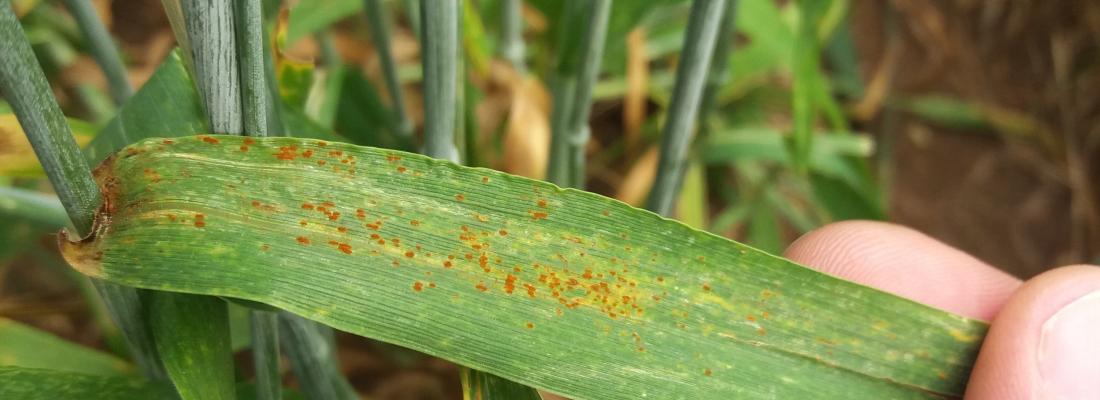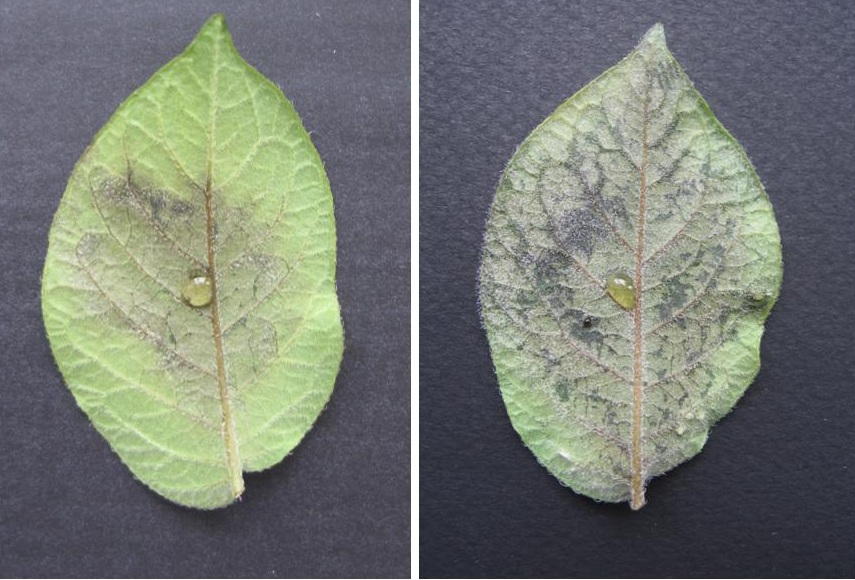Climate change and risks Reading time 3 min
Anticipating the future risks of fungal disease development in crops
Published on 11 January 2018

In the future, crops will have to cope with more frequent periods of water and heat stress. “These changes in climate are not without consequences for disease development and it is better to be prepared,” says Marie Launay, co-leader of the CLIF project on the impact of climate change on fungal diseases.
INRAE agronomists, climatologists, bio-climatologists, pathologists, epidemiologists and computer scientists worked on this project, in collaboration with France’s agricultural technical institutes (1). The impact of future climate changes and the adjustments in agricultural practices linked to them have been studied in different crops affected by several fungal diseases: rusts and fusarium wilt in wheat, late blight in potato, phomopsis in sunflower, brown rot in peach and powdery mildew in oak.
Adaptations to practices with variable consequences

Given climate change, pathogens will evolve differently. For example, the CLIF project has demonstrated that by the end of the century brown rust in wheat will start 20 days earlier as we emerge from winter and end 40 days later in the autumn. The infection-free summer period will be considerably extended.
“In general, pathogens grow with moisture and heat. In some cases, excessively high temperatures and droughts will be unfavourable to them,” says Marie.
Farmers are changing their practices. “As an example, to avoid high temperatures during the grain filling period, wheat is being sown earlier,” explains project co-leader Laurent Huber, “but with this early planting, diseases have more time to settle and develop.”
To adapt to future climate conditions, some species could be cultivated in the off-season or in regions where they are not currently grown. As we move away from current practices, the question is how pathogens will develop in these new conditions.
Pathogens acclimatise too
How will pathogens adapt to rising temperatures? Which strain will pose the greatest threat? These are questions the CLIF project has addressed by working in the laboratory.
“We have investigated the infection success, according to temperature, of different strains of yellow rust in wheat from Europe and North Africa,” says Laurent. “We found that the Warrior strain has an average infection success regardless of the temperature. It is therefore more likely to develop in an area than other strains which may be more infectious but only at a given temperature, whether that be high or low.”
Insightful modelling
“The study of the impact of climate change on the evolution of diseases was conducted using different models and climatic scenarios between 2021 and 2100,” explains Marie. “And this helps to deal with the uncertainty. When the same trend is observed using several climate scenarios, the results are more robust.”
The researchers also integrated the calculation of leaf wetness duration in future climate scenarios into the models. “We did this because in order to develop, pathogens require a certain period of time where water is freely available on the leaves,” explains Laurent.
(1) Acta, Arvalis-Institut du végétal, Terres Inovia, Forestry Health Department of the Ministry of Agriculture
References:
- Plantard O., Huber L., Guégan J.-F., 2015. Vers une écologie de la santé. Pour la Science March 2015, 30-35
- Corbière R., Chatot C., Mabon R., Mariette N., 2016. Mildiou en France : P. infestans sous surveillance. Phytoma 690 : 30-36.
- Gourdain E., Deudon O., Corre C., Guénolé G., Méléard B., 2015. Apports et limites des modèles dans l’évaluation des risques fusariose et DON à différentes échelles spatio temporelles dans un contexte de changement climatique. AFPP, Onzième conférence internationale sur les maladies des plantes, Tours, 7th - 9th December 2015.
- Debaeke P., Casadebaig P., Flenet F., Langlade N., 2017. Sunflower crop and climate change: vulnerability, adaptation, and mitigation potential from case-studies in Europe. OCL, Oilseeds & fats Crops and Lipids, 24.
